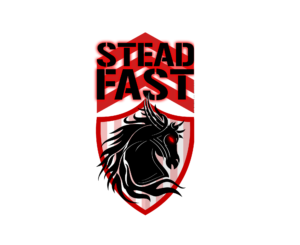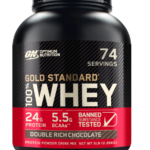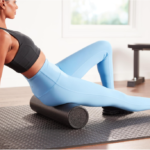
What is a One-Rep Max (1RM)?
In simple terms, your one-rep max (1RM) is the maximum amount of weight you can lift for a single, complete repetition of an exercise with good form. It’s like a snapshot of your peak strength for that movement—whether it’s a bench press, squat, deadlift, or any other major lift. Knowing your 1RM gives you a clear benchmark of your current strength level, which you can use to guide your training more effectively.
For me, understanding my 1RM has been a game-changer. It allows me to choose the right weights for different goals. For instance, when I’m focused on building pure strength, I’ll train with a weight that’s around 85-90% of my 1RM for lower reps. If my goal is to increase muscle size, I use a lighter weight, around 65-75%, for higher reps. This knowledge helps me work at the right intensity to maximize my results.
When I first started lifting, I had no clue what my 1RM was, and I often found myself either lifting too much and risking injury or not challenging myself enough. Using a 1RM calculator has changed that. I can safely estimate my max based on lighter weights and higher reps, giving me a solid foundation to build on without risking injury. Knowing my 1RM also helps me set realistic goals and track my progress over time, which keeps me motivated and confident in my abilities.
That’s why I believe everyone should know their 1RM, whether you’re just starting out or have been training for a while. It’s not just about lifting heavier—it’s about lifting smarter, staying safe, and making consistent progress.
Why I Think You Should Know Your 1RM
From my personal experience and what I’ve seen with my clients, knowing your one-rep max (1RM) is a game-changer in your fitness journey. It helps you tailor your workouts to your exact strength levels, making each session more effective and aligned with your goals. Plus, it’s a fantastic way to track progress over time. There’s something incredibly motivating about seeing those numbers go up!
Knowing your 1RM also keeps you safe. I’ve found that understanding your limits can prevent you from pushing too hard, too soon, and risking injury. It’s a way of respecting your body’s capabilities while still striving for improvement.
And let’s not forget about goal-setting! Having a clear 1RM allows you to set measurable goals, like adding 10 pounds to your bench press or increasing your squat depth with a specific weight. This clarity helps you stay focused and driven.
Lastly, when I’m planning my clients’ training programs, their 1RM gives me the precision I need to optimize each phase of their workouts. Whether they’re looking to build strength, size, or endurance, I can adjust the weights and reps perfectly to fit their needs.
In short, knowing your 1RM isn’t just for powerlifters or advanced athletes—it’s a powerful tool that anyone can use to train smarter, avoid injuries, and achieve better results.
Understanding your one-rep max (1RM) can be a game-changer in your fitness journey. It helps tailor workouts to your current strength level, making progress more measurable and effective. If you're in the 35-65 age group and new or moderately experienced in fitness, this guide will help you safely determine your 1RM and use it to optimize your training. Plus, I'll share tips on recovery and nutrition to support your progress.
In simple terms, your one-rep max (1RM) is the maximum amount of weight you can lift for a single, complete repetition of an exercise with good form. It’s like a snapshot of your peak strength for that movement—whether it’s a bench press, squat, deadlift, or any other major lift. Knowing your 1RM gives you a clear benchmark of your current strength level, which you can use to guide your training more effectively.
For me, understanding my 1RM has been a game-changer. It allows me to choose the right weights for different goals. For instance, when I’m focused on building pure strength, I’ll train with a weight that’s around 85-90% of my 1RM for lower reps. If my goal is to increase muscle size, I use a lighter weight, around 65-75%, for higher reps. This knowledge helps me work at the right intensity to maximize my results.
When I first started lifting, I had no clue what my 1RM was, and I often found myself either lifting too much and risking injury or not challenging myself enough. Using a 1RM calculator has changed that. I can safely estimate my max based on lighter weights and higher reps, giving me a solid foundation to build on without risking injury. Knowing my 1RM also helps me set realistic goals and track my progress over time, which keeps me motivated and confident in my abilities.
That’s why I believe everyone should know their 1RM, whether you’re just starting out or have been training for a while. It’s not just about lifting heavier—it’s about lifting smarter, staying safe, and making consistent progress.
By leveraging my 1RM effectively, I ensure my workouts—and those I design for my clients—are targeted, efficient, and constantly moving us toward our goals. It’s not just about lifting heavy; it’s about lifting smart and maximizing every rep.
From my personal experience and what I’ve seen with my clients, knowing your one-rep max (1RM) is a game-changer in your fitness journey. It helps you tailor your workouts to your exact strength levels, making each session more effective and aligned with your goals. Plus, it’s a fantastic way to track progress over time. There’s something incredibly motivating about seeing those numbers go up!
Knowing your 1RM also keeps you safe. I’ve found that understanding your limits can prevent you from pushing too hard, too soon, and risking injury. It’s a way of respecting your body’s capabilities while still striving for improvement.
And let’s not forget about goal-setting! Having a clear 1RM allows you to set measurable goals, like adding 10 pounds to your bench press or increasing your squat depth with a specific weight. This clarity helps you stay focused and driven.
Lastly, when I’m planning my clients’ training programs, their 1RM gives me the precision I need to optimize each phase of their workouts. Whether they’re looking to build strength, size, or endurance, I can adjust the weights and reps perfectly to fit their needs.
In short, knowing your 1RM isn’t just for powerlifters or advanced athletes—it’s a powerful tool that anyone can use to train smarter, avoid injuries, and achieve better results.
How to Calculate Your 1RM Safely
For most, it’s better to estimate your 1RM using a submaximal (less than 90%) weight instead of lifting your absolute maximum, which can be risky. Here’s a quick guide:
- Choose a weight you can lift for 4-6 reps.
- Perform the exercise until you can’t do another rep with good form.
- Use an online 1RM calculator to estimate your max.
ONE-REP MAX CALCULATOR
If you can bench press 100 lbs for 5 reps, your estimated 1RM would be around 116 lbs. This estimate is based on well-established formulas and gives you a safe starting point for your training.
I re-test my 1RM every 8-12 weeks. Seeing those numbers go up is always motivating! It tells me that my training is working and helps me fine-tune my programs. As a master trainer, I use this data to adjust weights not just for big lifts, but for supporting exercises too.
How to Use Your 1RM in Training
Once you know your 1RM, it becomes a powerful tool for structuring your workouts. Here’s how I use it and how you can too:
1. Strength Training:
If you’re aiming to build maximum strength, use 85-90% of your 1RM for sets of 1-5 reps. This is where I focus on lifts like squats, deadlifts, and bench presses with fewer reps to really push my limits. The idea is to lift heavy but with fewer repetitions, allowing you to increase the weight over time while building pure strength.
2. Hypertrophy (Muscle Growth):
To increase muscle size, work with 65-75% of your 1RM for 8-12 reps per set. This range targets muscle growth by increasing the time your muscles are under tension. When I’m in this phase, I focus on controlled movements, making sure I feel the muscle working throughout each rep. This is a great approach for adding size without stressing your joints too much.
3. Muscle Endurance:
For muscle endurance and conditioning, use 50-60% of your 1RM for sets of 15 or more reps. This approach is excellent for improving stamina and muscle endurance, especially for exercises like bodyweight squats or light dumbbell presses. I use this strategy when I want to build resilience and improve my overall fitness without focusing solely on strength.
4. Periodization:
Using your 1RM allows you to plan your training in cycles, a method called periodization. I like to structure my training into phases: strength, hypertrophy, and endurance. For a few weeks, I might focus on heavy, low-rep sets to build strength. Then, I’ll switch to a higher-rep range to target muscle growth, followed by a phase for endurance training. This helps avoid plateaus and keeps training fresh.
5. Tracking Progress:
Your 1RM isn’t static; it changes as you get stronger. I recommend re-testing your 1RM every 8-12 weeks to see how much progress you’ve made. Seeing your 1RM increase over time is one of the best indicators that your training is effective and that you’re getting stronger. It also allows you to adjust your training weights accordingly to ensure you’re always challenging yourself.
Recovery: The Key to Progress
Recovery isn’t just something I preach to my clients—it’s a cornerstone of my own training philosophy. Without proper recovery, all the hard work you put in at the gym won’t translate into the gains you’re looking for. I’ve learned that rest and recovery are just as important as the training itself. Here’s how I approach it to ensure my body—and my clients’ bodies—are primed for progress.
1. Prioritizing Protein Intake:
Protein is essential for muscle repair and growth. I make sure to get at least 0.8 to 1 gram of protein per pound of body weight daily. For me, that means incorporating lean meats, eggs, and legumes into my meals. But I know how challenging it can be to hit protein goals, especially with a busy schedule. That’s where protein supplements come in handy. I usually recommend a high-quality whey protein to my clients, especially post-workout. It’s a quick, convenient way to ensure your muscles have the building blocks they need to recover and grow.
2. Staying Hydrated:
Hydration is another critical aspect of recovery. When I’m not properly hydrated, I can feel the difference—not just in my workouts but also in how I recover. I aim for at least half my body weight in ounces of water each day. For example, if I weigh 200 pounds, I’m drinking around 100 ounces of water. I always remind my clients to hydrate before, during, and after their workouts. It’s amazing how something as simple as drinking enough water can prevent muscle cramps and improve overall performance.
4. Active Recovery and Mobility Work:
On my rest days, I don’t just sit around. I like to incorporate active recovery sessions that include light cardio, stretching, or foam rolling. This keeps my muscles loose, improves blood flow, and helps reduce soreness. I encourage my clients to do the same—it’s a way to stay active without putting additional stress on the body. I’ve found that even a 30-minute walk or a session with a foam roller can do wonders for muscle recovery and flexibility.
5. Listening to Your Body:
This is probably the most important lesson I’ve learned over the years. Your body will tell you when it needs rest. If I’m feeling unusually sore or fatigued, I know it’s time to back off a bit. Pushing through pain or extreme fatigue can lead to overtraining and injury, which will set you back even further. I always tell my clients: it’s better to take an extra rest day now than to be forced into weeks of downtime due to an injury.
Recovery isn’t just about what you do outside of the gym—it’s an integral part of your overall fitness plan. By prioritizing protein, hydration, sleep, active recovery, and listening to your body, you can make sure all the hard work you’re putting in translates into real, sustainable progress. If you need help optimizing your recovery routine or have questions about supplements or recovery tools, I’m always here to guide you. Recovery is where the gains happen, and I’m here to help you make the most of it.
FREQUENTLY ASKED QUESTIONS
Q. How often should I test my 1RM?
A. Testing every 8-12 weeks is ideal to track progress without risking overtraining.
Q. Can I use my 1RM for all exercises?
A. While you can estimate a 1RM for most lifts, it’s best to focus on compound movements like squats, deadlifts, and presses.
Q. What if I’m not comfortable testing my 1RM?
A. No problem! Use lighter weights and focus on improving your form and technique.
Product Placement Suggestion:
This is a great place to suggest signing up for a free consultation or training session to help beginners safely navigate their 1RM testing and training.
Final Thoughts
Understanding your 1RM and incorporating it into your training can take your workouts to the next level. It’s not just about lifting heavier weights—it’s about lifting smarter, staying safe, and making consistent progress. Remember, the goal is to build strength and confidence, both in and out of the gym.
If you’re interested in personalized guidance, consider reaching out for a consultation. Whether online or in-person, we’re here to help you achieve your fitness goals. Let’s make your fitness journey a successful and enjoyable one!
Join My Community for More Tips
If you found this guide helpful, consider signing up for my newsletter. You’ll get weekly tips on strength training, nutrition, and mindset to help you reach your fitness goals. Plus, you’ll be the first to know about my online and in-person personal training programs!



